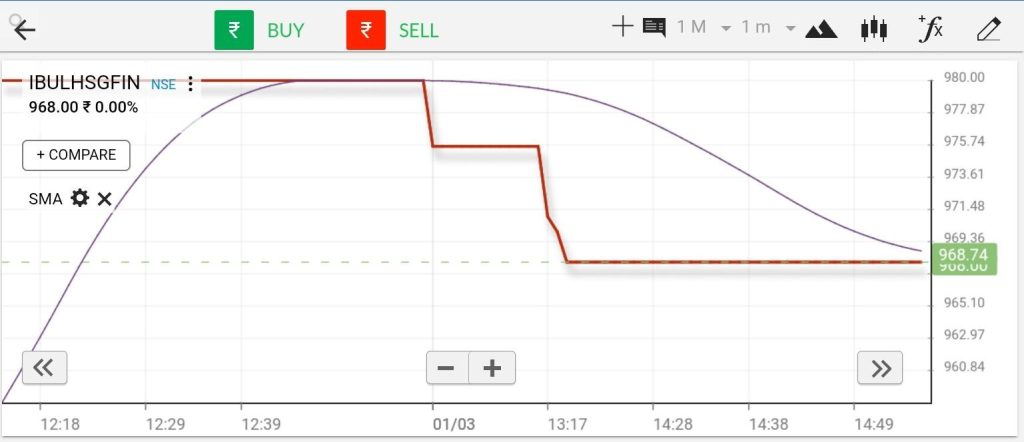
Embarking on the journey of mastering stock trading strategies involves a comprehensive understanding of various technical indicators, and the 50-day moving average (50-DMA) is a key player here. As a popular trend-following indicator, the 50-DMA holds significant relevance for traders seeking to navigate the complexities of the stock market. In this guide, we find out the intricacies of the 50-day moving average trading strategy in detail.
Table of Contents
Defining 50-Day Moving Average Trading Strategy
The 50-DMA trading strategy is a technical analysis approach that utilises the 50-DMA as a key indicator to assess the overall trend of a stock’s price. This strategy involves tracking the average closing prices of the last 50 trading days to identify trends, potential reversals, and trading opportunities. Traders often use the 50-DMA as a reference point to make informed decisions about entering or exiting positions based on the stock’s price movements relative to this moving average.
Importance of 50-Day Moving Average Trading Strategy
The 50-DMA holds significant importance in currency pair trading, serving as a key indicator for traders to gauge market trends and make informed decisions. A positive trend is indicated when the currency pair price consistently resides above the 50-DMA, signalling potential buying opportunities. Conversely, a negative trend is observed when the price remains below the 50-DMA, suggesting potential selling opportunities.
Traders employing this strategy often wait for opportune moments to enter the market. They consider buying positions when the price rises above the 50-DMA and selling positions when the price falls below this moving average. Importantly, traders exercise caution and wait for the price to settle decisively above or below the 50-DMA before making trading decisions. This prudent approach allows them to comprehend market circumstances and make well-informed moves, enhancing the effectiveness of the 50-day moving average trading strategy in navigating currency pair fluctuations.
Using 50-Day Moving Average
- In a general context, a stock price trading above the 50-day moving average is considered positive.
- Conversely, a stock price trading below its 50-day moving average is viewed with a negative perspective.
- Consider initiating a long position when the stock price rises and rebounds off the 50-day simple moving average (SMA) as a supportive level.
- Conversely, contemplate a short position if the stock price encounters resistance at the 50-day SMA and subsequently rebounds lower.
- A shift in outlook to a negative stance is advisable if the price moves below the 50-day SMA.
- On the contrary, if the stock breaks decisively higher above the 50-day SMA, investors should consider adopting an optimistic outlook.

These six principles are vital for understanding the nature of the 50-day simple moving average indicator. While they may appear to convey similar concepts, each principle holds distinct implications. It is essential to emphasise that relying solely on the 50-day moving average for buying or selling securities is not advisable. Successful trading requires a more comprehensive approach, and while advanced degrees are not a prerequisite, exclusively relying on the 50-day moving average is not considered a fruitful trading technique.
Calculating 50-Day Moving Average
The concept of supply and demand is sensitive to various external influences that could impact it and does not work in a vacuum. Nonetheless, the four essential ideas that describe how demand and supply are correlated provide an accessible explanation of what demand and supply are.
- Supply is unchanged while demand rises: This will result in a price increase in a market where there is price competition. The value of the product rises as a result of product scarcity.
- Supply is unchanged while demand declines: The cost drops in this instance. If demand keeps decreasing, there will be an excess of the product on the market, which would lower its value.
- Supply rises while demand is steady: A product’s price drops when it is widely accessible, which might lead to an overstock situation if demand is sustained for an extended period of time.
- Supply falls but demand stays steady: The price will rise when the supply declines without a corresponding change in demand.
Understanding Moving Average Crossover Strategies
When two distinct moving average lines cross over one another, it is referred to as a moving average crossover. A moving average crossover strategy is a thorough approach created to assist forex traders in entering and exiting transactions. There are basically two different kinds of crossovers: the golden cross and the dead cross.
- Golden Cross: Two averages with distinct periods are required for the golden cross—one average with a shorter time and one with a longer period. A purchase signal is generated whenever the shorter period moving average crosses a longer period moving average bottom-up.
- Dead Cross: A sell signal is generated if the MA with a shorter duration breaks below the longer or slower moving average. No matter what type of moving average you use—smooth, basic, or exponential, the result will most likely be a sell signal.
Obviously, neither a golden nor a death cross advises you to buy or sell automatically. You shouldn’t make a purchase or sale decision based only on one indicator. Remember that depending on your strategy, indicators such as moving averages can produce signals you might not want to act upon. The 50-day and 200-day moving averages have crossed numerous times over the previous few years, and trading these signals might have been outside your goals. Rather, these crossovers offer supplementary information that may indicate a change in the trend.
Conclusion
The 50-day moving average serves as a valuable tool for identifying lucrative trading opportunities within robust trends. Investors can effectively manage their stop-loss levels by tracking the price in relation to the 50-day moving average, allowing them to capitalise on significant trends. It is essential to note that entering a trade becomes less favourable when the price deviates too far from the 50-day moving average. Prudent investors patiently wait for a price retracement before seeking entry points, utilising reversal candlestick patterns or trendline breaks when the price aligns with the 50-day moving average.